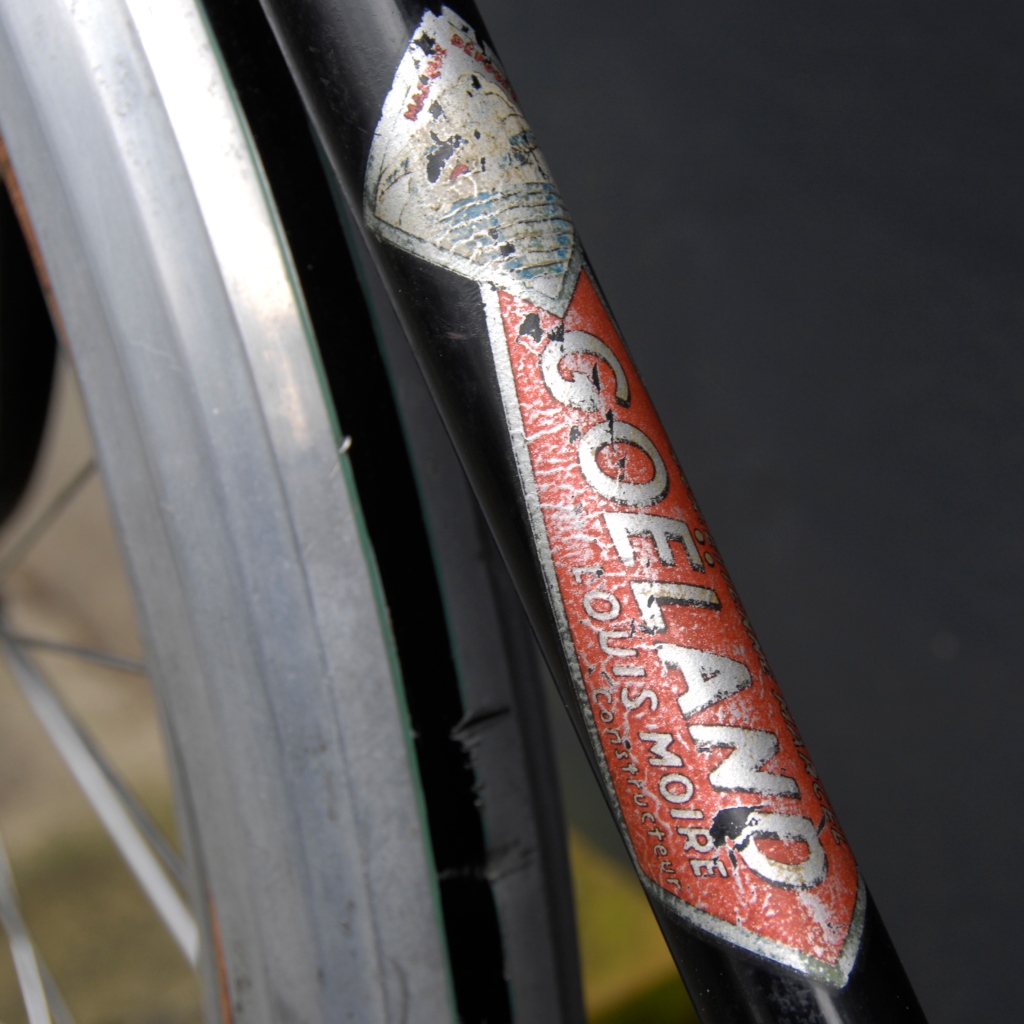
The Paris constructeur Louis Moire was quite a prolific maker, from the mid 1930’s to the early 1970’s, under the Goëland (Seagull) name. From his shop at 44 Rue Etienne Marcel, he retailed mid-priced machines which were probably often made by outside frame builders. He seemed to like ‘Speedy’ tubing, a heavy duty cheaper product than the finer productions of Reynolds or Vitus. I’ve seen many Goëland bicycles, and they are often handsomely finished, but rather heavy and fitted with mid-range parts. Occasionally he produced special bicycles in top of the range Vitus or Reynolds tubing, fitted with the best parts and many hand made fittings. This is an example of such a machine.
Constructed in Reynolds 531, the frame has heavily modified and finely filed Oscar Egg (or possibly Nervex?) lugs. Goëland-made parts include front and rear racks, front derailleur and handlebar stem. Rear brake cable and dynamo wiring runs internally. The rear brake hanger arrangement is unusual with the cable looping around a neat alloy hanger and back up to the fitting beneath the saddle. Brakes are M.A.F.A.C. cantilevers with the early open-back levers. Rims are early Super Champion laced to Maxi-CAR hubs, fitted with rare Cyclo ‘Rapid’ quick releases. Mudguards are Lefol ‘Le Paon’. Chainset is Stronglight, with Tank pedals, and Tank 4-speed freewheel. Handlebars are Phillipe randonneur and the saddle an Ideale 59 Professionel. The most interesting fitting, though, is the Spirax rear derailleur. This remarkable and rare derailleur was designed by Raymond Bon in the late 1940’s. Bon was one of René Herse’s team riders. It works on a similar principle to the Cyclo, with the sprockets sliding along a rod with a spiral groove, but it has a single cable and a built-in spiral flat spring, which keeps the chain in tension much more evenly than the chainstay spring on a Cyclo. The gear is also ‘indexed’, the changer incorporating a ball bearing which clicks into place at each gear change. More about this gear in a later post (Does anyone have further information about setting up this gear?)
The bicycle is in excellent original order. The only non-original part being the rear lamp. The original rear lamp appears to have been fitted to the left rear chainstay, as there is a lug and wiring there. The transfers are in reasonable condition, whilst there is extensive light blue lining, beautiful executed.
I will be carrying out minimal work to the bike, touching in a little of the missing enamel, and replacing cables and handlebar tape. One unusual feature of the bike is a rather jazzy colour scheme. The lining is pale blue, whilst the dynamo wiring and brake cables are green, and the brake hoods are red! The little windows in the head lugs are also filled with green paint. This is quite an unusual colour scheme and I intend to keep it like that. I have yet to find green cable outers similar to the disintegrating originals, and red second-hand mafac hoods (anybody got some?), so it may temporarily be finished with light blue bar tape and cable outers until I find the correct parts.
So, here are some pictures of the bike in its as-found state, with more to follow in a later post.
More pictures of Goëland machines here.
Click on photo for large-scale image











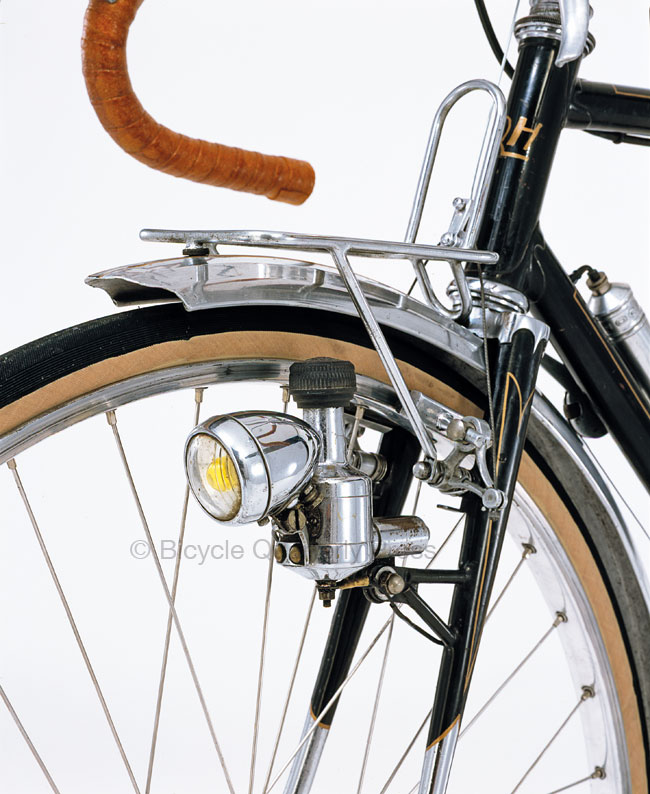









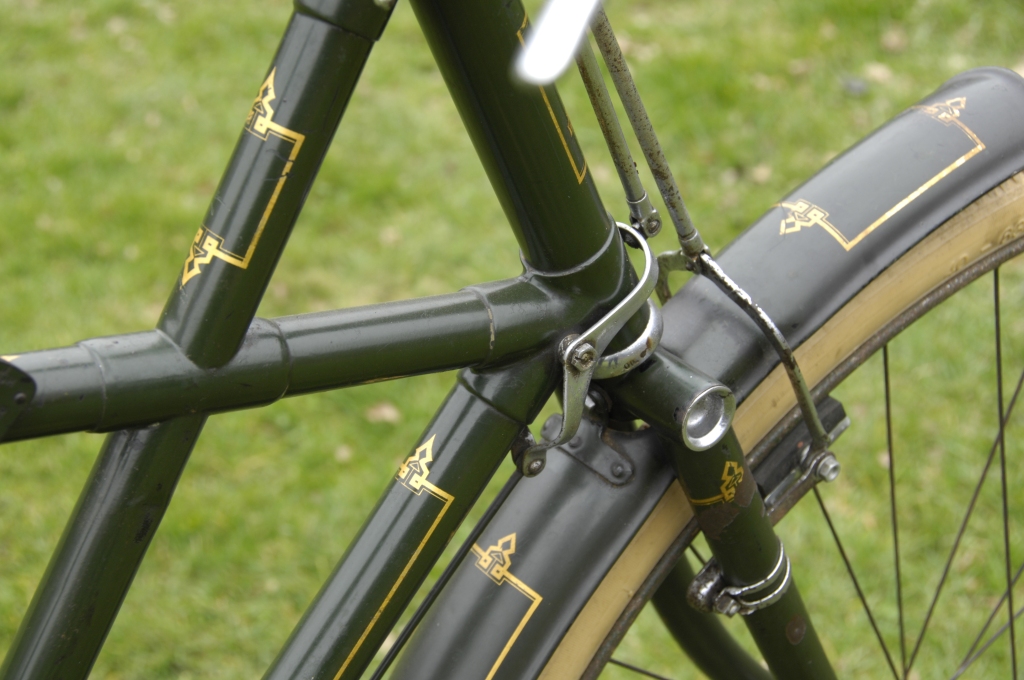





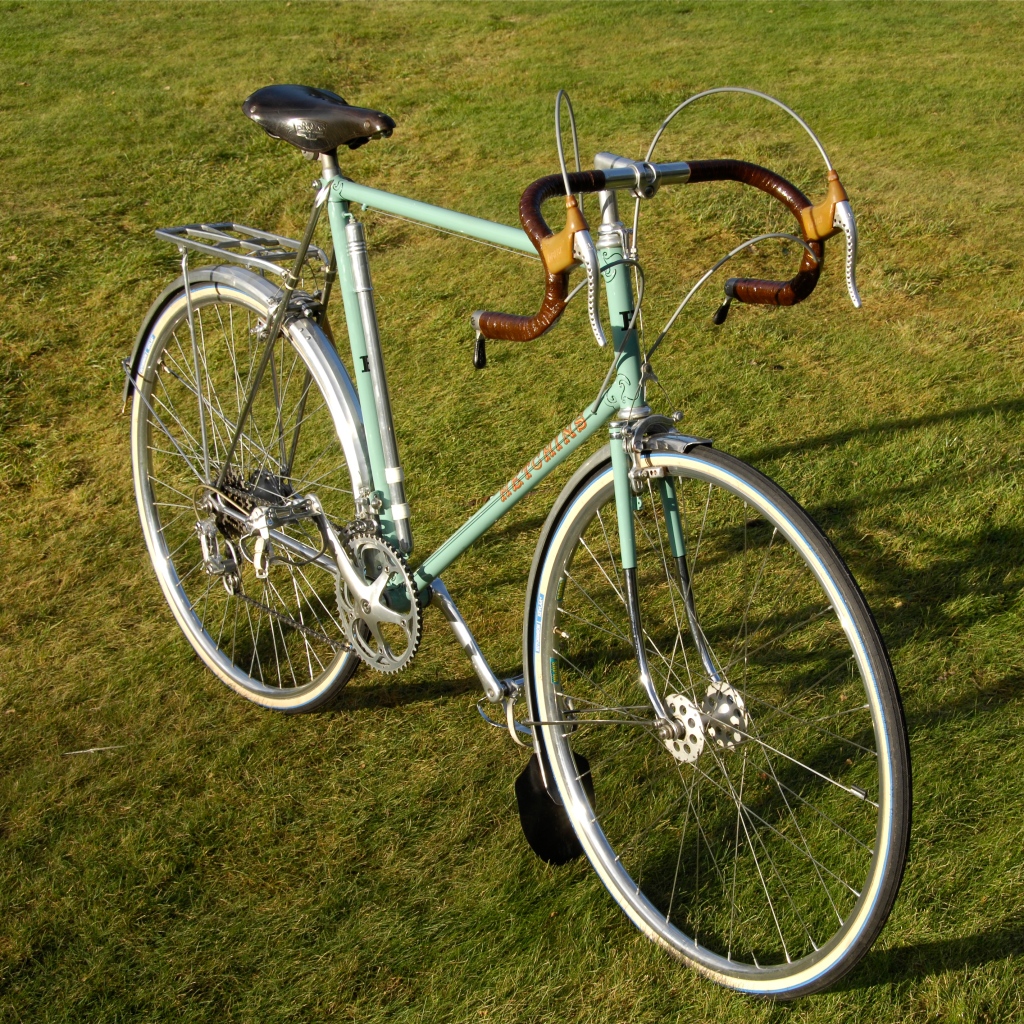












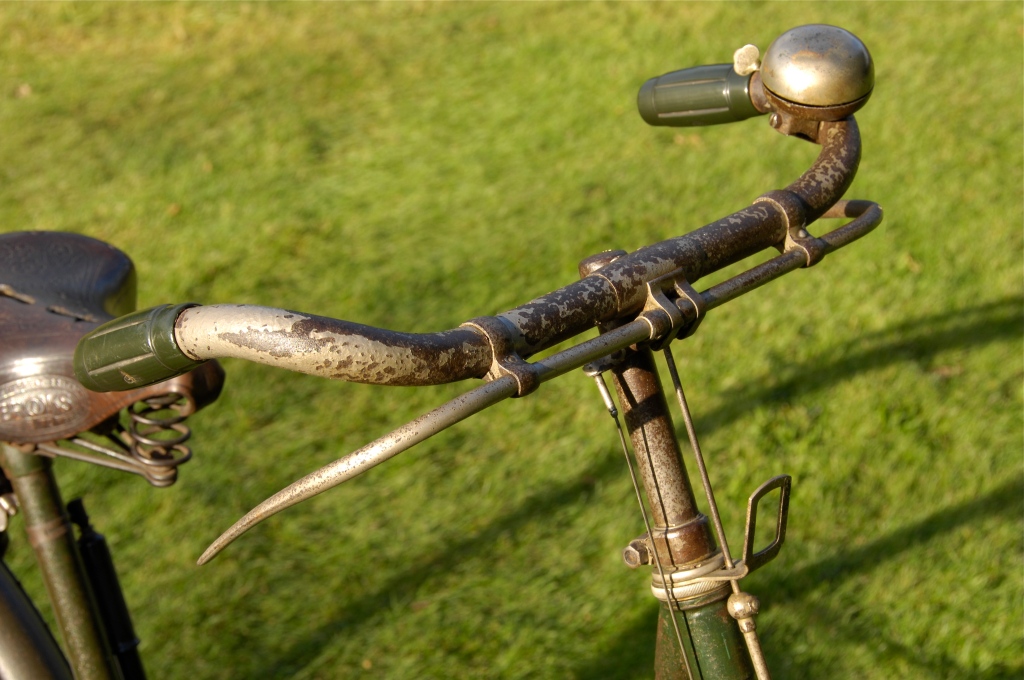


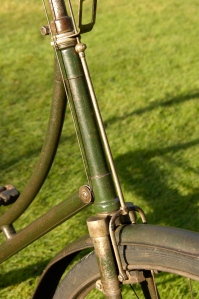
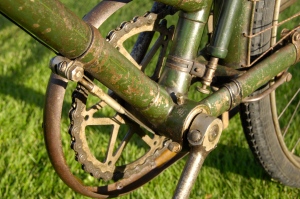




















You must be logged in to post a comment.